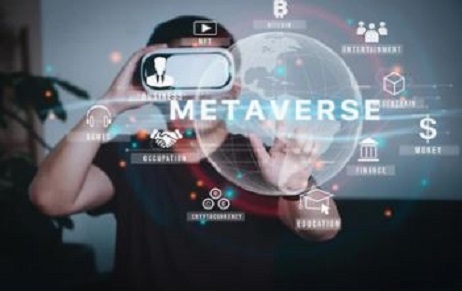Introduction Robert J Thieruf in his book “Virtual Reality Systems for Business” explains Virtual reality…
Exploring The Various Strategies For Ip Monetisation Convert Your Ideas Into Income
One of the main purposes of intellectual property laws is in fact to facilitate the owner to reap financial benefits from his intellectual property. This is the only way to keep inventive and creative drive alive. Another aspect of commercialisation is public access, as the major purpose inventions and creations must serve is in terms of utility to the society, in turn creating a breeding ground for more innovations essential for the overall development of the market and economy. Monetisation of IP also gives rise to new ideas among people as well as challenges the existing ideas and inventions, which is a necessity for growth. This blog explores the importance of monetisation of IP and also discusses the considerations that must be involved in curating strategies and finally gives a brief overview of the basic and common methods of monetisation.
INTRODUCTION:WHAT IS IP MONETISATION?
Monetisation is the primary incentive received by an inventor or a creator for an intellectual property. The term refers to the means by which, in this case, IP can be used to earn profit. Intellectual property is an umbrella term for various types of intangible and incorporeal properties including patents, copyrights, trademarks, trade secrets, geographical indications and others identified under different national and international laws. Intellectual properties are granted protection by the intellectual property laws under different jurisdictions. This means that the creator or the inventor or the owner of it can exercise a certain level of monopoly with regards to the production and distribution of the products that arise out of their IP. This is however always limited to a certain time frame, for example, protection for patents is granted for twenty years, copyright for 60 years and so on and so forth. Exceptionally, the term of protection of trade marks can be renewed perpetually after expiry by following the procedure laid down under the laws.
[Image Sources : Shutterstock]

There are a number of considerations that should factor into the framing of a flawless monetisation strategy. The first consideration is in fact the similar technologies existing in the market and their utilities, especially to competitors. This will help the owner in gauging the competitive advantage of his product and whether other intellectual properties pose a threat to the monetisation of one’s own property. Another interesting fact is that monetisation, contrary to how it appears, is a process that starts way before innovation. This means that innovators and creators should invest their time and resources into products with potential for marketability. There are various online tools and databases that can be put to use to research and identify novel ideas.
One of the most important considerations is in fact the valuation of IP Valuation entails determining the value of IP assets. There is a number of purposes for which IP valuations are carried out including licensing deals, franchising, joint ventures, selling rights in intellectual properties, mergers and acquisitions, and so on. It is to be noted that the value of an IP is not constant and is susceptible to changes over time. Different methods can be employed to value IP like market-based methods, cost-based methods and income-based methods. The approach chosen is dependant on factors like the availability of data, the objective of valuation, the progress in the development of the intellectual property and so on.
Opting for the right strategy to monetise the intellectual property is another important consideration that has to factor in for IP commercialisation. It is always advisable to go through all the potential strategies to narrow down to the best one. In conclusion, it is always important introduce new inventions into the market, attain appropriate licensing for the same and in the case of patents, selling and enforcing them.
METHODS OF MONETISATION
There is a wide array of options available to the IP owners when it comes to the monetisation of their intellectual properties. Some of the primary ways are the following:
- Assignment of IP –Many companies assign their IP portfolios for huge amounts and individuals assign their IP to companies for returns as well. The person from whom the ownership is transferred is called the assignor and the party to whom it is transferred is called the assignee.
- Suing the infringers of IP –This method necessarily need not result in a litigation since most cases are settled by means of negotiations and out of court settlements. However, there are two types of infringements that tend to occur in this regard. The first type is the infringement of products that are mainly commercialised by the IP owners. In this scenario, their primary source of income is from the sale of the products that result from their intellectual property. Any infringement of the same would affect their profits detrimentally and the suit shall be to recover those damages. However, the second scenario is in the case of IP owners who do not commercialise their intellectual property. Hence their source of revenue is through licensing or suing their infringers.
- Licensing – By means of licensing, the owner does not have to transfer all the rights over the intellectual property to the other party. This can also be a regular source of income for the licensor i.e the owner of the IP. This is in fact one of the most common methods of IP monetisation. Some owners even license their IP since the licensors are in better positions that they themselves are to commercialize the intellectual properties. Licensing may be in return for either lumpsum or royalties, a decision left to the discretion of the owner.
- Sale – This sale includes the sale of products or services that are protected by intellectual property rights. IP rights are reserved by the owners against any third parties or infringers. These rights allow them to produce goods or provide services using their innovative or inventive steps. The sale of such products or services is a major source of revenue for the owners in this case.
CONCLUSION
Even though the potential for rewards is huge, IP monetisation is an activity that is characterized by high elements of risk and requires the investment of a long period of time. However, in the right hands like an experienced business entity or a well-functioning company, and in the presence of well though out marketing strategies, it is a stellar way for inventors, creators and intellectual property owners to generate revenue. Well-structured IP valuation and IP monetisation mechanisms can fuel up the growth of any entity to unparalleled heights.
Author: Sruthy Jayakumar, A Student School of Legal studies Cochin University of Science and Technology in case of any queries please contact/write back to us via email to [email protected] or at IIPRD.
References:
- https://ip.com/blog/5-ways-turn-ip-new-sources-revenue/
- https://www.managingip.com/article/2a5czbs6depyxpvgnfl6o/ip-monetisation-a-primer
- https://grr.com/publications/monetization-of-intellectual-property/
- https://www.wipo.int/sme/en/ip-valuation.html



